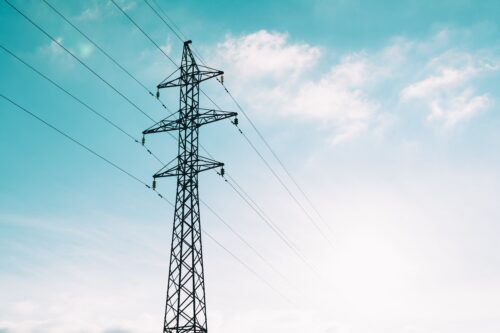
Interregional transmission is expected to play a critical role in decarbonized power systems, by improving efficiencies across markets, reducing renewable curtailment and congestion, and enhancing system resilience to extreme weather events. On April 17th, a coalition of Northeast states led by Massachusetts applied for federal funding via the Department of Energy’s Grid Innovation Program for a project that would expand interregional transfer capacity between NYISO and ISO-New England. E3 is proud to have led the analysis of the potential benefits of the project on behalf of National Grid, the transmission owner who would perform the proposed line upgrades. Our analysis was performed in collaboration with Hitachi Energy and we found that the project, referred to as the “Clean Resilience Link”, would provide over $1 billion in benefits (NPV) over its lifetime that would well exceed the costs of the upgrades.
The Clean Resilience Link represents a proposed upgrade of an existing 230kV intertie to 345kV, taking advantage of a unique timing opportunity to enhance transfer capability over the entire New York-New England interface by supplementing planned asset condition work in New England. The resulting upgrades would increase interregional transfer capacity by up to 1 GW, leading to more efficient system dispatch and reduced congestion, lower renewable curtailment, and both monetary and emissions benefits over the project’s lifetime.
The study team, consisting of E3 and Hitachi Energy, performed nodal production cost modeling using GridView. The analysis was designed to examine the impacts of the Clean Resilience Link under scenarios that aligned with achievement of state policy targets across the Northeast, and this work was informed by E3’s publicly available studies in both New York and New England. E3 managed this effort and led the scenario design process; the development of all inputs such as electrification-driven demand forecasts; and review, processing, and synthesis of study results. To translate policy-aligned resource portfolios to the nodal level, E3 also developed a multistage downscaling and substation allocation process, guided by hosting capacity estimates at each substation.
In collaboration with National Grid, E3 briefed state policymakers and other key stakeholders on the results of this study, and developed a suite of post-processing tools and visualizations to create clear, accessible summaries of our detailed technical analyses. E3 is proud to have supported the funding application for this project, which could play an important role in enhancing interregional transfer capacity and supporting decarbonization efforts across the Northeast. E3 team members Lakshmi Alagappan, Kevin Steinberger, Nate Grady, Ben Joseph, Pedro Oporto, and Edita Danielyan contributed to this work.


